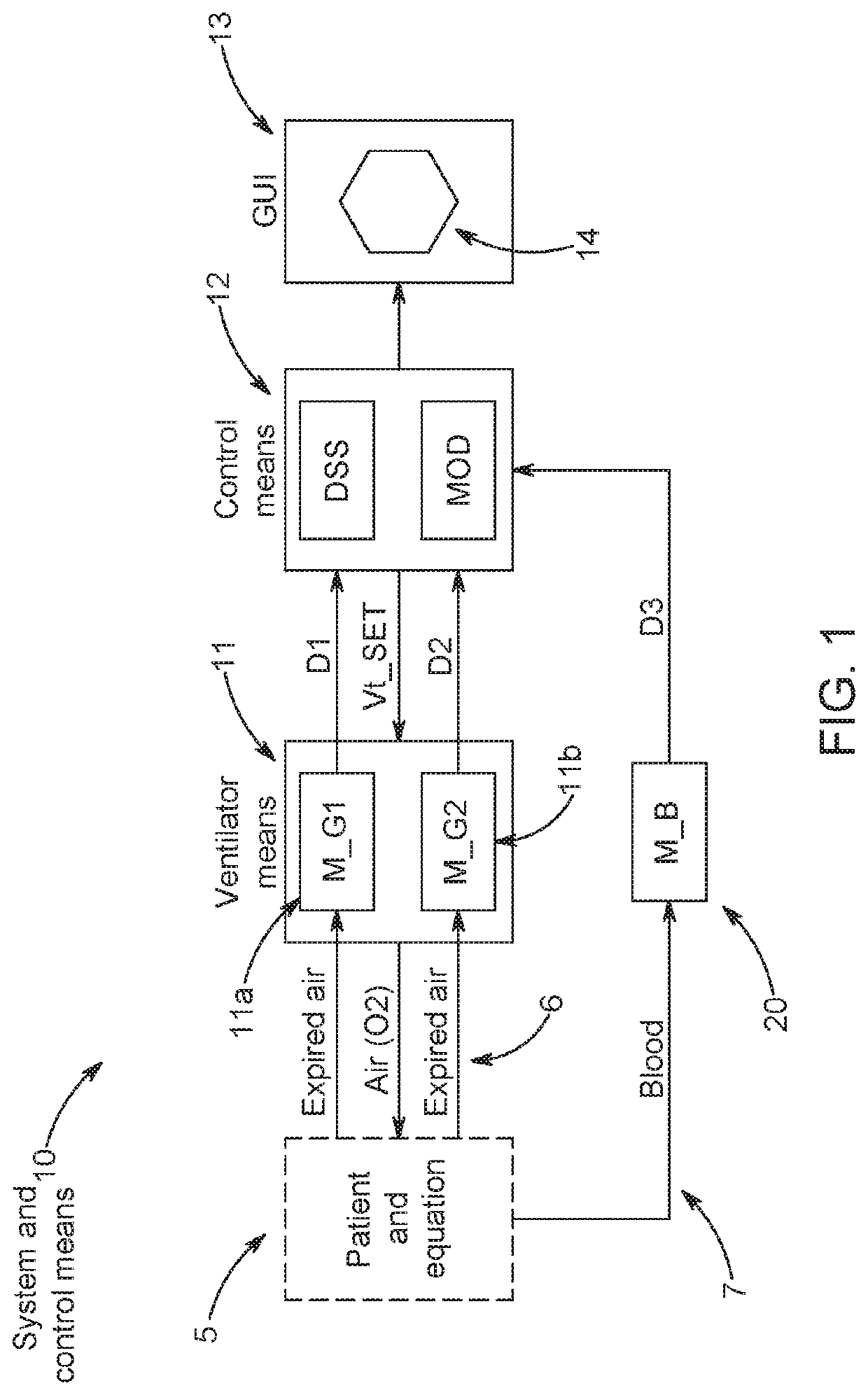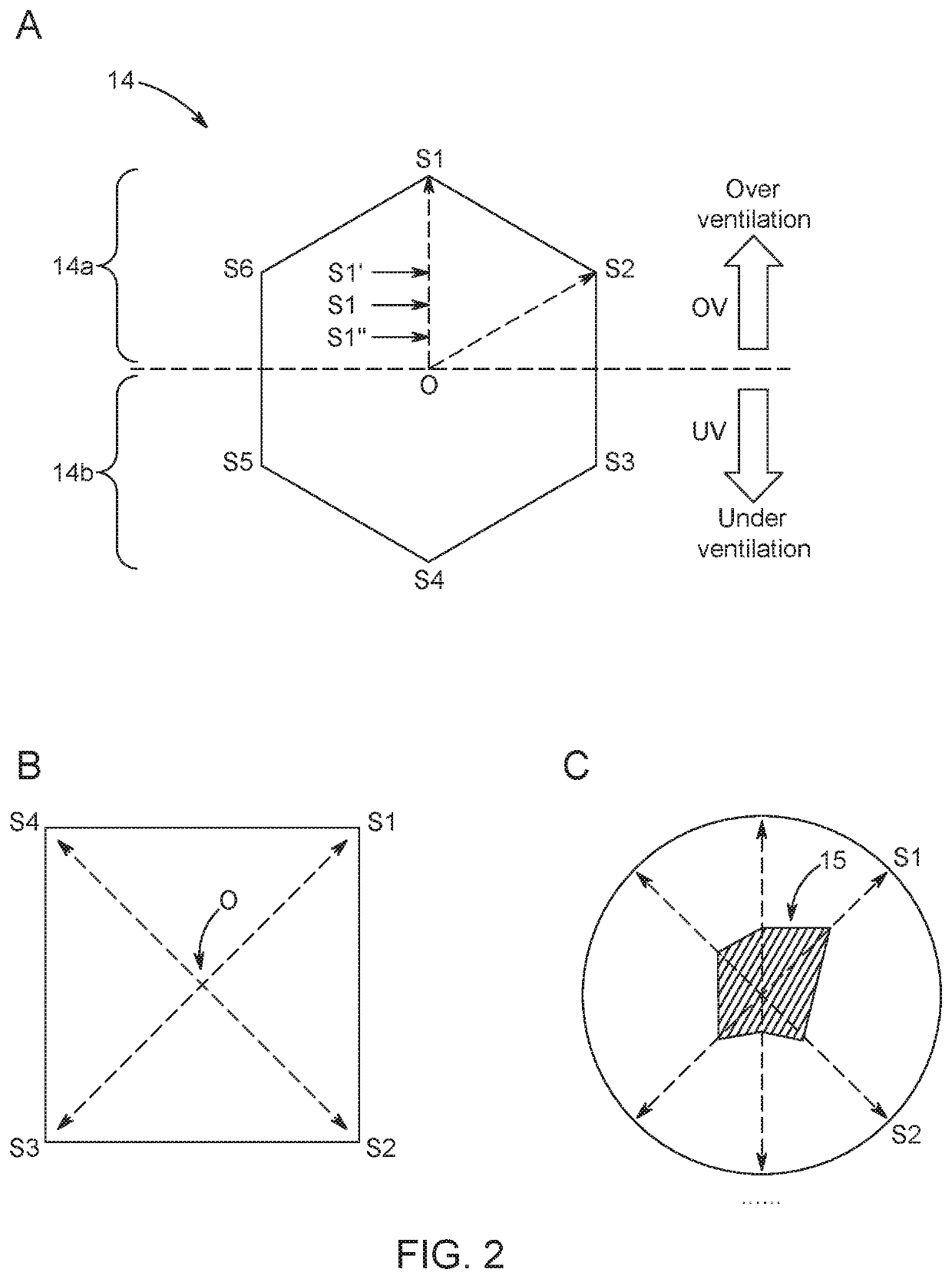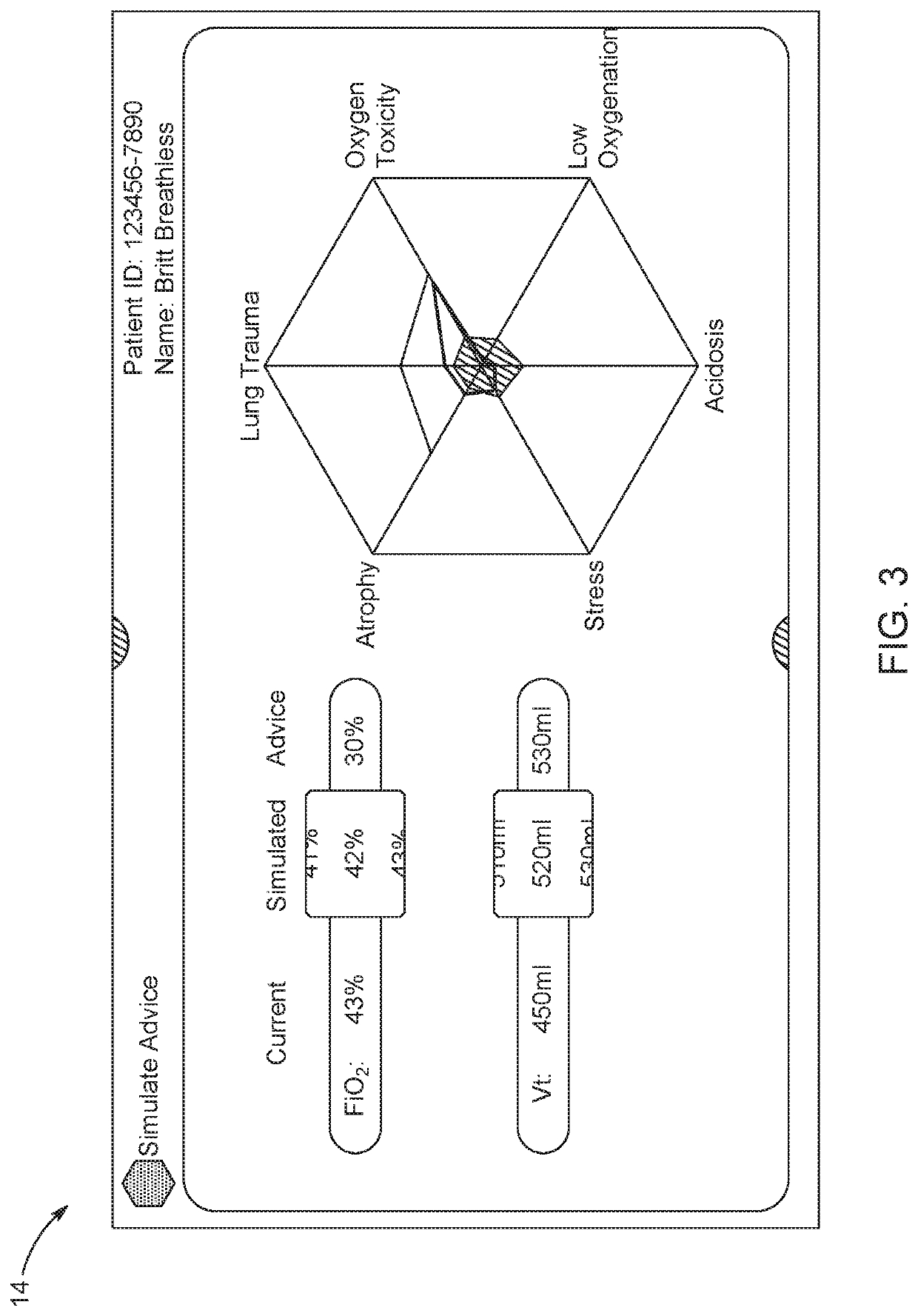Decision support system for lung ventilator settings
a technology of decision support system and lung ventilator, which is applied in the field of decision support system for lung ventilator settings, can solve the problems of difficult for clinicians to maintain an overview for all parameters, limited current aids for mechanical ventilation, and lung trauma, so as to simplify the decision phase, increase ventilation pressure, and increase ventilation pressure
- Summary
- Abstract
- Description
- Claims
- Application Information
AI Technical Summary
Benefits of technology
Problems solved by technology
Method used
Image
Examples
Embodiment Construction
[0086]As described above, the core aspect of the invention is the use of preference functions to calculate scoring values and corresponding preference zones / areas 15 from clinically measured variables allowing integration of relevant mechanical ventilation variables for a patient into a single presentation covering the contrasting preferences related to mechanical ventilation helping the clinician to minimise risk of over-ventilating and under-ventilating the patient.
[0087]FIG. 1 is a schematic drawing of a mechanical ventilation system 10 for respiration aid of an associated patient 5, P, the system being adapted for displaying / plotting information of physiological parameters in a manner providing the clinician with information which is difficult to subtract from mere number values. The respiration aid may be fully controlled or supported.
[0088]The system comprises ventilator means 11, VENT capable of mechanical ventilating said patient with air and / or one or more medical gases, e....
PUM
 Login to View More
Login to View More Abstract
Description
Claims
Application Information
 Login to View More
Login to View More - R&D
- Intellectual Property
- Life Sciences
- Materials
- Tech Scout
- Unparalleled Data Quality
- Higher Quality Content
- 60% Fewer Hallucinations
Browse by: Latest US Patents, China's latest patents, Technical Efficacy Thesaurus, Application Domain, Technology Topic, Popular Technical Reports.
© 2025 PatSnap. All rights reserved.Legal|Privacy policy|Modern Slavery Act Transparency Statement|Sitemap|About US| Contact US: help@patsnap.com



